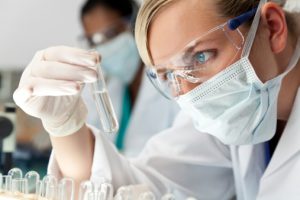 Living with diabetes can be hard. Having to take daily medication and watch what you eat can be a chore. However, it is absolutely required, as the ramifications of not doing so can be devastating.
Living with diabetes can be hard. Having to take daily medication and watch what you eat can be a chore. However, it is absolutely required, as the ramifications of not doing so can be devastating.
Uncontrolled diabetes can lead to everything from increased risk for cardiovascular disease to blindness. Nerve damage is also a possibility, with the feet commonly being affected, leading to foot damage. Due to poor blood circulation, this appendage can develop cuts, bruises, and even serious infections that don’t heal properly, ultimately leading to toe, foot, or leg amputation.
Advertisement
The only way to prevent this scenario currently is to control your diabetes, as not much can be done in cases of serious non-healing infections. However, a new therapeutic treatment could potentially better treat these complications and promote healing.
New way of healing
Cell therapy has provided a new avenue for treatment care in diabetic patients and skin repair as a whole. This form of therapy involves modifying white blood cells—the cells that fight infection—to accelerate the healing process.
Normally, white blood cells play a vital role in normal wound healing. By maintaining the balance between inflammation and anti-inflammatory reactions, white blood cells promote tissue repair and cellular clean up.
“When a wound doesn’t heal, it might be secondary to enhanced inflammation and not enough anti-inflammatory activity. We discovered that macrophage behavior can be controlled so as to tip the balance toward cell repair by means of a special protein called Milk Fat Globule Epidermal Growth Factor-8, or MFG-E8,” said Jean-François Cailhier, a CRCHUM researcher and professor at the University of Montreal.
Modifying our own cells
By using these modified macrophages, the researchers could heal lesions much more quickly by using a newly developed treatment called adaptive cell transfer.
This new procedure consists of treating a patient with their own cells. Cells are harvested, treated, then re-injected for the desired effect. While this form of immunotherapy has been used for some time in the treatment of cancer, this is a first for its implementation in reprogramming cells to help heal the skin.
Advertisement
While preliminary experiments have only been carried out in mice, the study serves as a foundation for further research. The next step is to test on human cells and to develop a program of human cell therapy for diabetic patients and victims of severe burns.
“If with this treatment, we can succeed in closing wounds and promoting healing of diabetic ulcers, we might be able to avoid amputations. Serious burn victims could also benefit. By accelerating and streamlining the healing of burns, we may be able to reduce the infections and keloids that unfortunately develop much too often in such patients.” said Cailhier.
Related: Diabetes diet: Healthy snacks for managing diabetes
